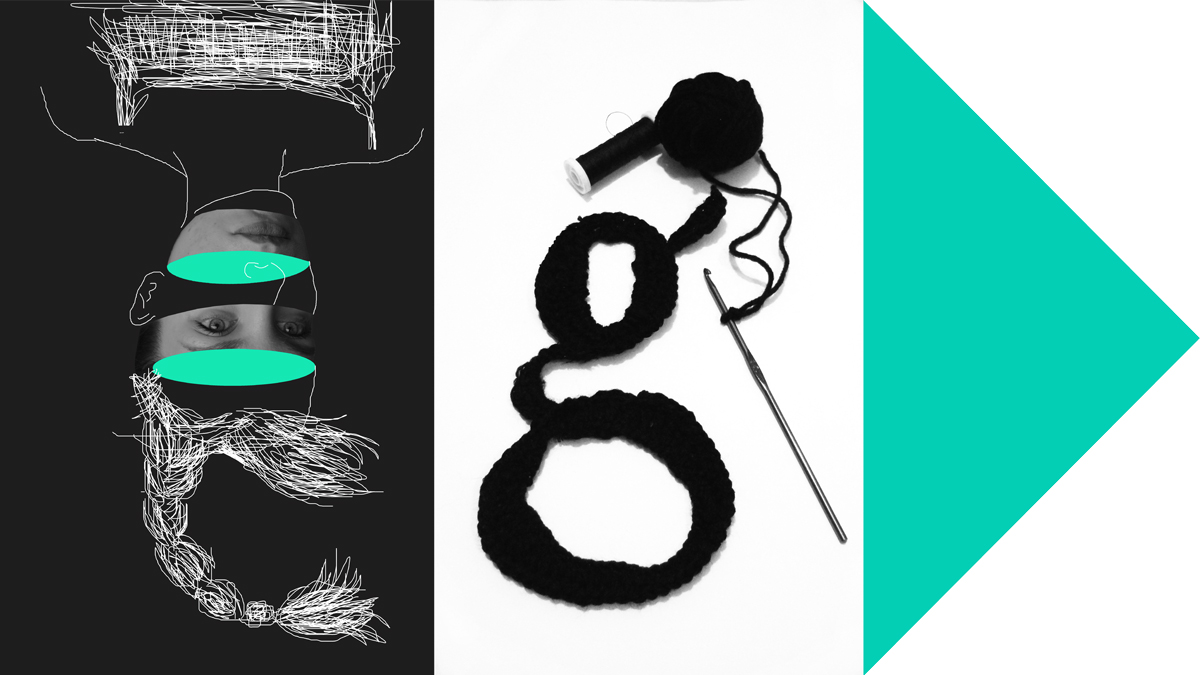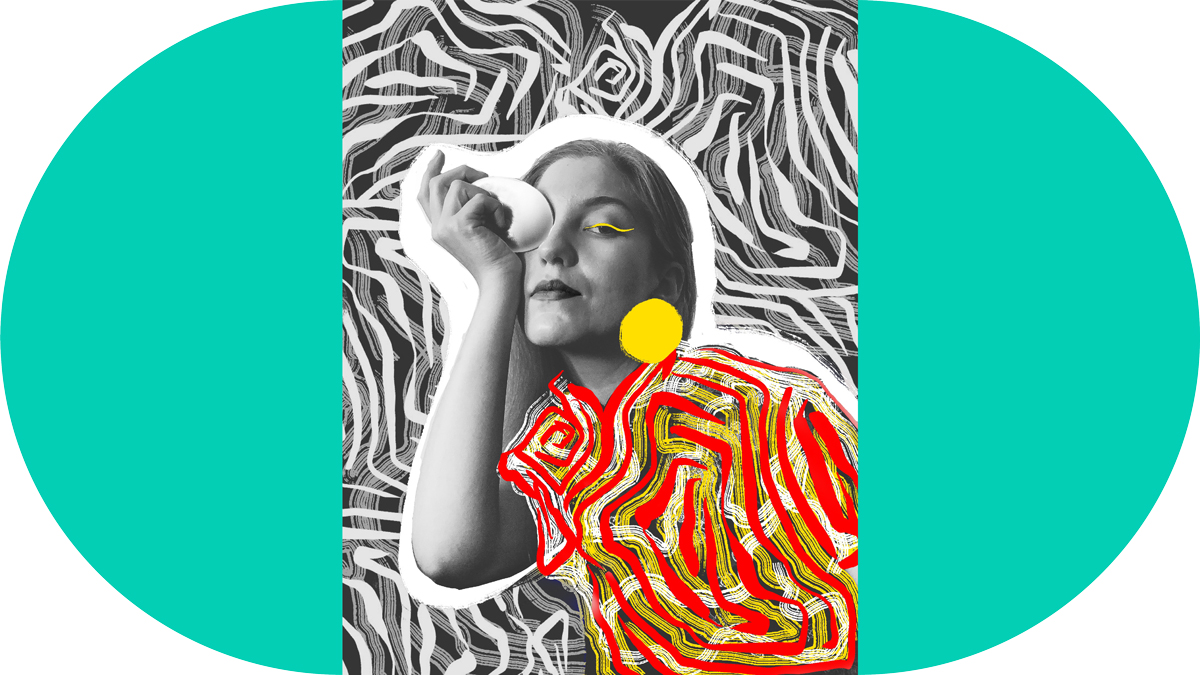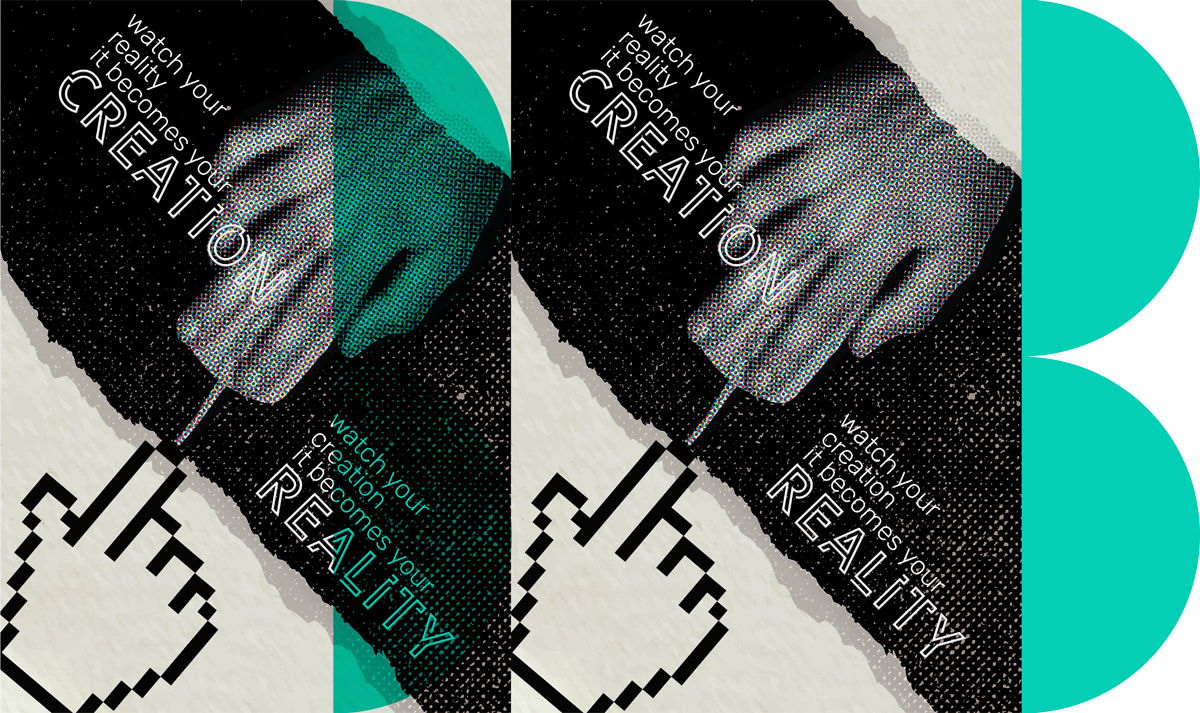‘After this experience, the challenge is to harmonize the motivation of all team members, the dynamics and continuity of work… If there is no communication, then insight into the process is lost,’ Arijana Kadić.
 Good morning, Arijana! We appreciate your willingness to be the first interviewee in our young designers’ interview series. To begin, I’d like to inquire whether this marks your first encounter with collaborating with a cultural institution.
Good morning, Arijana! We appreciate your willingness to be the first interviewee in our young designers’ interview series. To begin, I’d like to inquire whether this marks your first encounter with collaborating with a cultural institution.
First of all, hello to all your readers and thank you for having me! I completed my internship at the National Library of Montenegro, and that was my first experience working with a cultural institution. However, working with the Cultural Centre in Trebinje is my first experience when it comes to creating the entire visual identity solution for a cultural institution.
How challenging was it to work within a team? After this experience, what do you think are the challenges and advantages compared to working independently with a client?
Working in a team is always a kind of challenge, and an opportunity to grow and discover our own capabilities and limitations. In this project, teamwork was additionally challenging because it was conducted “remotely”. After this experience, the challenge is to harmonize the motivation of all team members, the dynamics and continuity of work. The key thing is regular communication among members and in the team. If there is no communication, then insight into the process is lost. It is very important that all team members are informed about the process that takes place individually and that they exchange opinions and knowledge. Otherwise, it can happen that, within one project, members work separately and in a fragmented way, and that the overall concept lacks integrity. Also, if all members do not accept equal responsibility for their tasks, then teamwork can be a greater burden because energy is directed – instead of the creative process – toward balancing responsibilities.
The advantage of teamwork compared to working independently lies in the different approaches and perspectives, and a greater possibility of arriving at a better and more creative solution. Also, if there is good communication and an equal sense of responsibility among all members, redistribution of tasks gives the designer more space for creativity and experimentation.
What contribution to the development of the institution’s new identity are you most proud of?
I am most proud of the website solution and the spatial design.
How much can you express yourself creatively in the final solution when you work within a team?
Team work implies openness to criticism and suggestions. Even though a designer can express themself as an author, that expression should carry the ideas and values which all team members stand behind. When a designer works independently, they are solely responsible for their work. Teamwork entails the ability to adapt and seek compromises that are acceptable to all team members.
Has the project allowed you to further shape your design language?
It’s difficult to answer this question since the project is still ongoing. It takes some time after the project and some distance from it to assess the extent of its impact on my work.
In what aspect was the visit to the institutions useful for your research process? Do you think this should be an integral part of the practice in working with clients?
Visiting the institution was a very important part of the research process because that way I gained direct information and impressions about the institution itself. A designer, through their own experience of the place and its surroundings, establishes the starting point for the design process but also, through discussions with the employees and the local mentor, they gain another dimension and valuable material for the foundation of the work. The visit allowed me to connect with the assignment and establish contact with the people who make up that institution. The better I know the client, its way of working and needs, my motivation and the quality of my work are higher.
After your experience with this project, and other work experiences, explain the difference between working with cultural institutions and clients that promote commercial content (if you have experience with them).
From my work experience so far, I’ve noticed that cultural institutions usually seek longer-term collaboration. Employees in cultural institutions tend to have a somewhat conservative approach when it comes to graphic design and visual communication. In contrast, clients who deal with commercial content tend to follow trends through social networks, the Internet, and try to keep up with them. They also more often let the designer propose different solutions and approaches, while cultural institutions rather stick to their established practices that are considered successful, and want the designer to follow their existing visual language.
 What of the experience gained during this project would you apply in your further independent work or work with future clients?
What of the experience gained during this project would you apply in your further independent work or work with future clients?
This project allowed me to experiment more and, following the work of other teams, I learned some new approaches. In communication with the mentors, I learned that every sketch in the beginning can be a potential solution, and that you should not be exclusive when it comes to preferences (liking, disliking), but look more openly and objectively at each proposal. A project is a great opportunity to practice character and discipline because there are moments when motivation is stronger, but also moments when it weakens. To maintain consistent energy and dedication for each segment of this project, it is necessary to make an effort towards multiple smaller goals that are part of the big one.
What makes the cultural institution you worked on in this project unique? How does it meet the needs of a young audience?
The Cultural Centre of Trebinje is specific because the content we deal with is from the domain of culture and art, but the way we shape it should also have a commercial aspect. That is why working for this institution was quite challenging. In the freedom given to us by the employees of the institution, since they had complete trust in the work of our team, there was one limitation – not to go into too artistic and abstract language. This institution is very active in the virtual space and communicates with the audience, so the work for that digital segment was very specific and it was necessary to consider several factors regarding the visual language (target group, programme, hierarchy of information and its visibility…).
Why do you think this project is important for the cultural institution you collaborated with?
I believe that this project has opened up new possibilities for the development of the institution in terms of visual communication and overall branding. Regardless of whether the design solutions are fully implemented (or not) during or after the project, it has raised new questions about the institution’s needs. Also, some conceptual solutions provide visions of what could be realized or what could stimulate new ideas. With this project, the Centre has been given the opportunity to initiate the process of renewal, not only in terms of graphic design but also the renewal of values and mission they strive for.
What is the strongest impression that the project has left on you?
Certainly, it was the visit to Trebinje and the Cultural Centre because it was a completely new experience for me – to work for a cultural institution outside the borders of my country, whose work I had not been familiar with before. Also, communication based on friendship, trust and spontaneity with local mentor Nada Arnaut.
Which cultural institutions in the region, and which outside the region, do you consider to be examples of best practice?
In the region, it is the Museum of Contemporary Art in Zagreb, and outside the region, I would single out the timeless visual language of Pentagram, which communicates brilliantly in the digital space.
Who would you suggest as a mentor for an upcoming project?
I think it would be interesting to work under the mentorship of Srđa Dragović. I also liked the systematic and explorative approach of Ognjen Ranković, the author of the Yugo Logo exhibition.
I enjoyed your interview! See you on the next ReCulture adventure. Shhh for now! 🙂